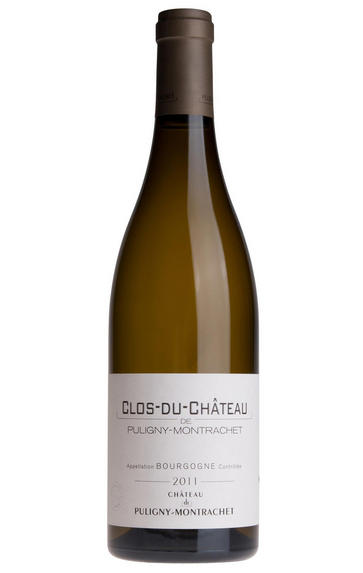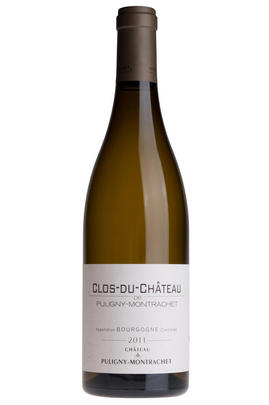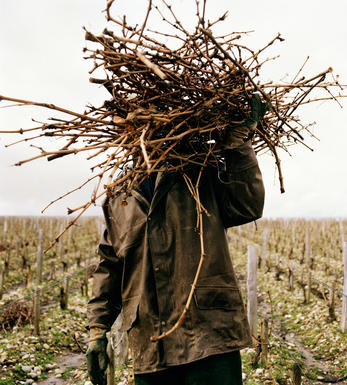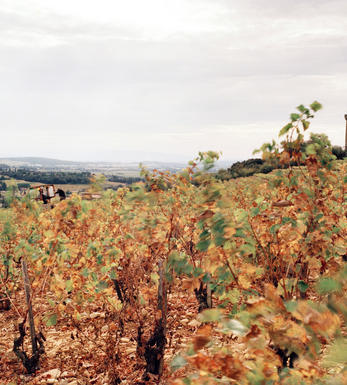
2011 Bourgogne Blanc, Clos-du-Château, Château de Puligny-Montrachet

About this WINE

Chateau de Puligny-Montrachet
Château de Puligny was a slumbering force until it was finally awoken by the arrival of Etienne de Montille in time to oversee the 2001 vintage. Under Etienne, yields have been drastically reduced and the wines are handled much more sympathetically in the cellar so that the quality of the fruit dominates the oak.
In 2012 Étienne and investors purchased the property and have radically reformed the estate, dropping unsuitable vineyards, converting to organic (and indeed biodynamic) farming, and further improving the winemaking.
Etienne also makes the wines at his family's domaine in Volnay, where a lighter touch is also in evidence in recent vintages. Puligny needs more Premiership performers, and Château de Puligny has already established its credentials as an elite respresentative.

Bourgogne Blanc
Bourgogne Blanc is the appellation used to refer to generic white wines from Burgundy, a wide term which allows 384 separate villages to produce a white wine with the label ‘Bourgogne.’ As a result of this variety, Bourgogne Blanc is very hard to characterise with a single notable style, however the wines are usually dominated by the presence of Chardonnay, which is just about the only common factor between them. That being said, Chardonnay itself varies based on the environmental factors, so every bottle of Bourgogne Blanc will vary in some way from the next! Pinot Blanc and Pinot Gris are also permitted for use in Bourgogne Blanc under the regulations of the appellation.
As Bourgogne Blanc is very much an entry-level white wine for most regions in Burgundy, prices are usually very reasonable, and due to the terroir and climate of Burgundy, Bourgogne Blanc wines tend to have a strong acidity to them, combined with a vibrant and often fruity palate when compared with other whites from the New World, say, allowing fantastic matchmaking with many different kinds of food.

Chardonnay
Chardonnay is often seen as the king of white wine grapes and one of the most widely planted in the world It is suited to a wide variety of soils, though it excels in soils with a high limestone content as found in Champagne, Chablis, and the Côte D`Or.
Burgundy is Chardonnay's spiritual home and the best White Burgundies are dry, rich, honeyed wines with marvellous poise, elegance and balance. They are unquestionably the finest dry white wines in the world. Chardonnay plays a crucial role in the Champagne blend, providing structure and finesse, and is the sole grape in Blanc de Blancs.
It is quantitatively important in California and Australia, is widely planted in Chile and South Africa, and is the second most widely planted grape in New Zealand. In warm climates Chardonnay has a tendency to develop very high sugar levels during the final stages of ripening and this can occur at the expense of acidity. Late picking is a common problem and can result in blowsy and flabby wines that lack structure and definition.
Recently in the New World, we have seen a move towards more elegant, better- balanced and less oak-driven Chardonnays, and this is to be welcomed.


Buying options
Add to wishlist
Description
Produced from vines found in the park to the front of the Château, this is textbook white Burgundy.
Pure, refined stylish, almost chiselled nose, with a sense of class (thanks to its location in front of the Château de Puligny-Montrachet) that continues right across the palate. A lively white burgundy that is perfect to drink now.
Jasper Morris MW, Berrys' Burgundy Director During the last year, Etienne de Montille, who has run Château de Puligny-Montrachet for the last decade, bought out the previous owners. 2012 will therefore be the first vintage of the new regime and also the first which will be fully certified organic after completion of the necessary three years. In 2011 the Château has produced a good crop of white wines, with old-fashioned low alcohol levels in both the reds and whites: wines originally found to be around 12% abv have been adjusted to 12.5% abv, anything above that was untouched.
A very pretty and elegant Bourgogne Blanc. Foral, crisp on the palate with a fresh green apple character and good mineral support. Ready to enjoy right away.
Francis Huicq, London Shop Manager
wine at a glance
Delivery and quality guarantee